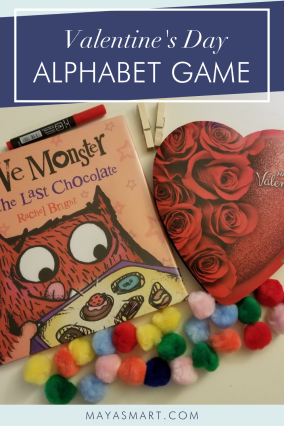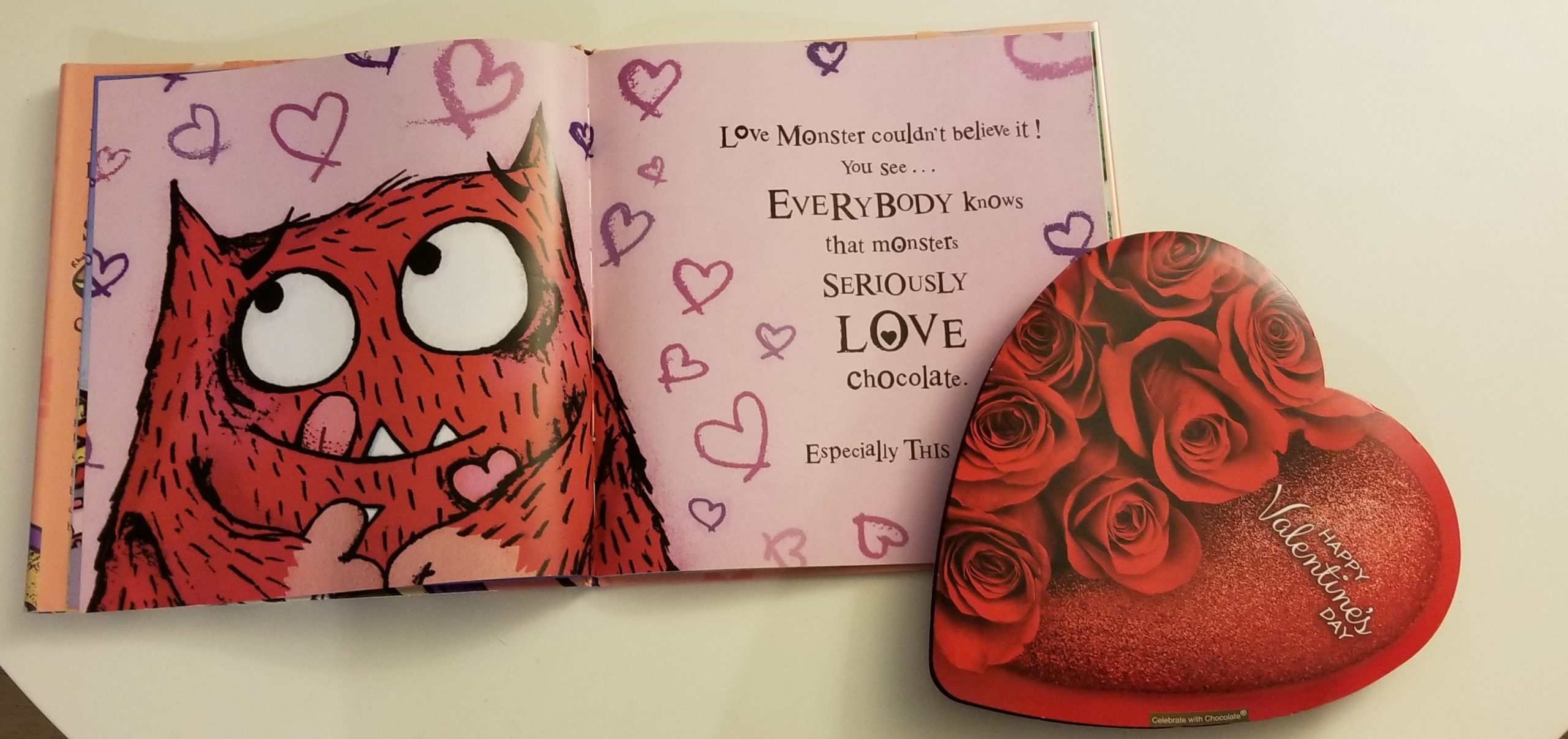Teaching reading and all the early literacy skills that underpin it requires time and repetition. As a teacher, I always seek activities that keep this practice variable and exciting. And as a certified chocoholic, how could I pass up the chance to mix up Valentine’s Day chocolate and literacy into one fun learning game?
This activity begins with spending quality time reading a sweet picture book to your child. A part of Rachel Bright’s Love Monster series, Love Monster and the Last Chocolate is a delightful book that teaches children about friendship, generosity, and, of course, chocolate! Valentine’s Day can easily become a holiday that’s simply about candy and how much they get. This book sparks conversation about what it means to be thoughtful and how generosity is a way of showing how much you care about someone.
After reading together, you’ll upcycle a chocolate box into a memory matching game that teaches children to pair uppercase letters to their lowercase counterparts. This is important because so many uppercase and lowercase letters look nothing alike. Sure, O and o are easy enough, but E and e or G and g? To an early reader, these pairings don’t seem logical, so reinforcing them is crucial. This easy activity leads your child from a read-aloud that engages them in conversation about love and friendship to an interactive game that takes their letter learning to the next level.

Materials:
- Love Monster and the Last Chocolate by Rachel Bright
- Valentine’s chocolate box
- Pom-poms
- Paper
- Scissors
- Markers
- Hot glue gun if your chocolates have paper wrappers instead of an insert with spaces for each chocolate
- Tweezers or clothespins (optional)
Step 1: Snuggle together and read Rachel Bright’s Love Monster and the Last Chocolate. Allow time for literacy-building tangents (check out our post on how to engage kids during read-alouds for maximum early literacy benefit).
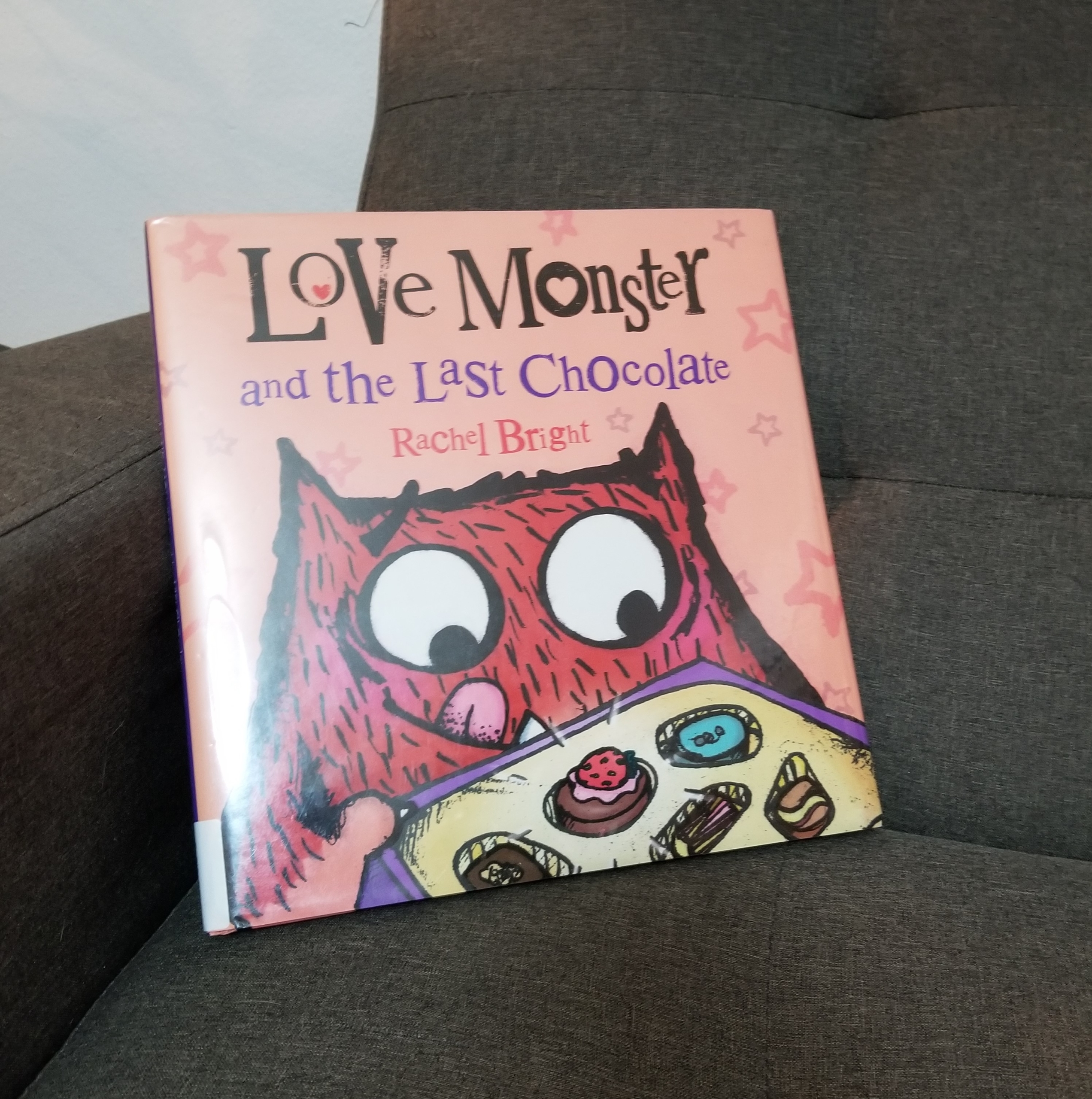
Step 2: Empty out the chocolate box! Share some with your child, and save the rest. (If you’re like me, you’ll want to keep some to reward yourself for your patience in the face of tantrums or missed naps!)
If you have the kind of chocolate box with little papers around each chocolate instead of an insert like the one shown below, glue the papers into place.

Step 3: Cut out pieces of paper that fit into the empty chocolate spots. If your box has paper wrappers, the pieces of paper should fit into each wrapper.
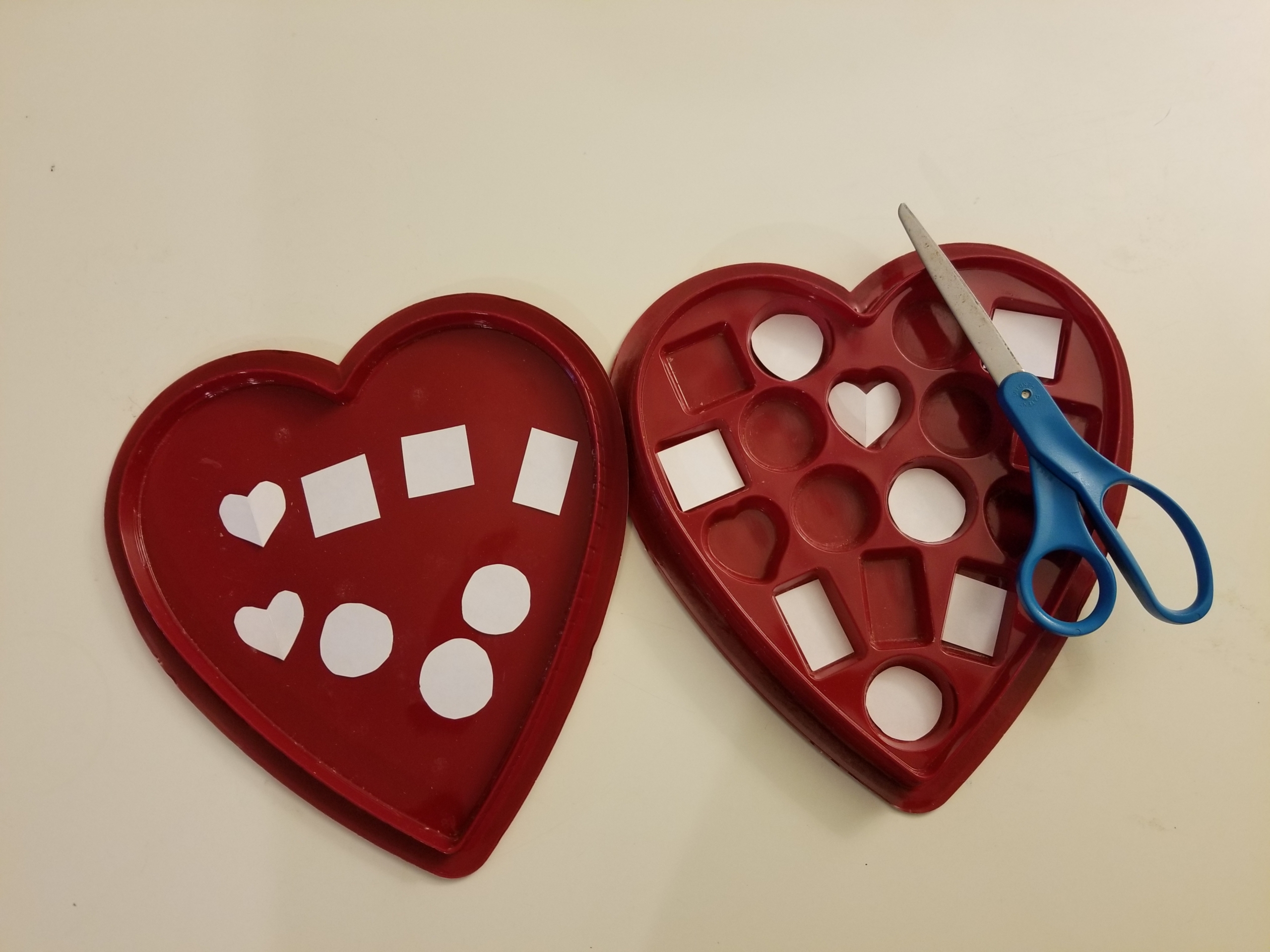
Step 4: Write a single uppercase letter on one of the pieces of paper, then write the letter in lowercase on another piece. You’ll write one uppercase and one lowercase of each letter, to make pairs. Continue until you have enough letters to fill the spaces. (If there are an uneven number of spaces, just leave the extra spot empty or fill it with a cute picture.)
Tip: When choosing letters, children respond well to the letters in their own name. Also, for kids who are just beginning to learn letters, l recommend avoiding multiple lowercase letters that look very similar. For example, b, d, p, and q all in the same game can be very confusing and discouraging.

Step 5: Place the paper shapes into the empty chocolate spots, then cover each with a pom-pom. Be sure to mix up the pairs.
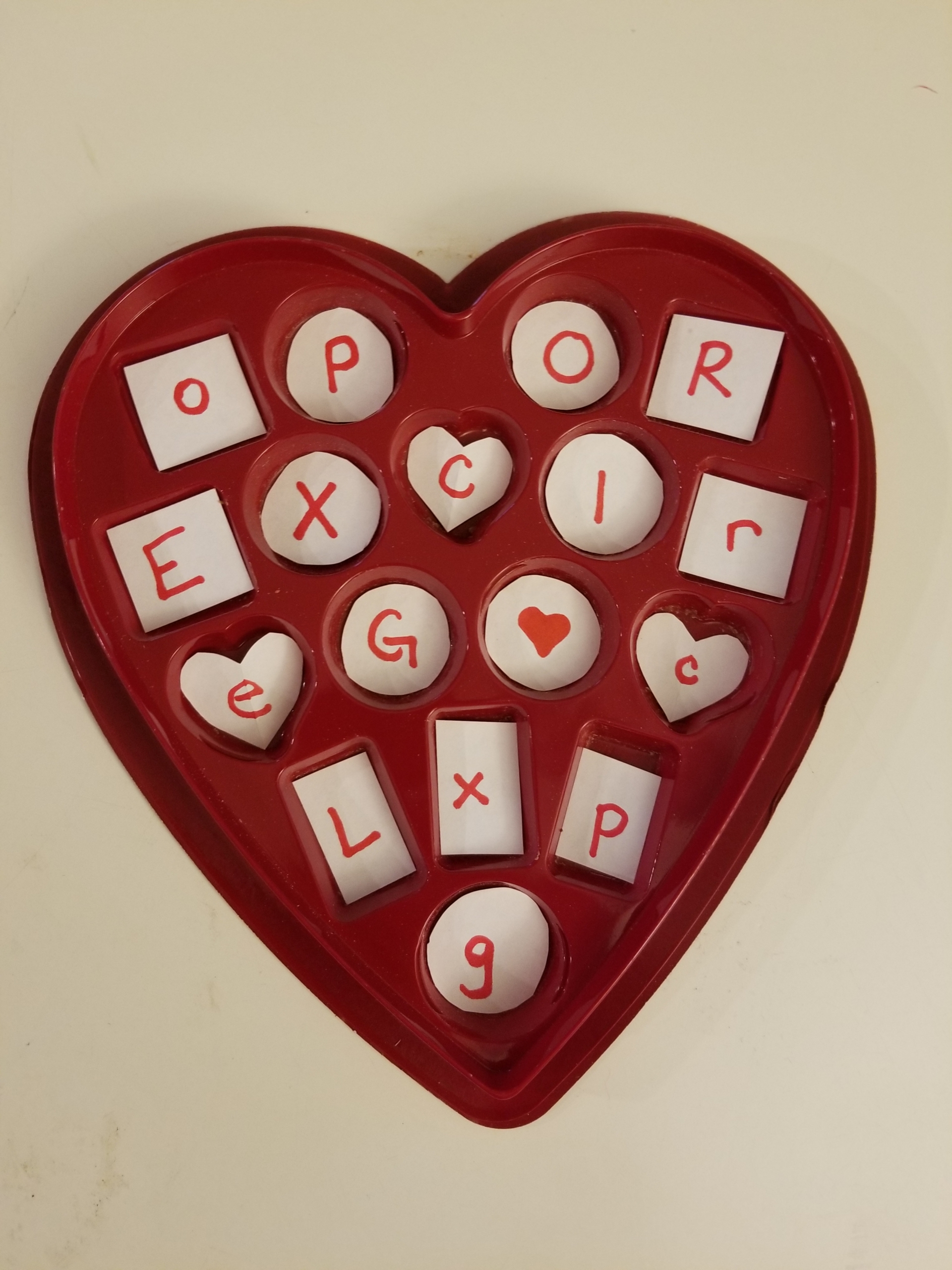
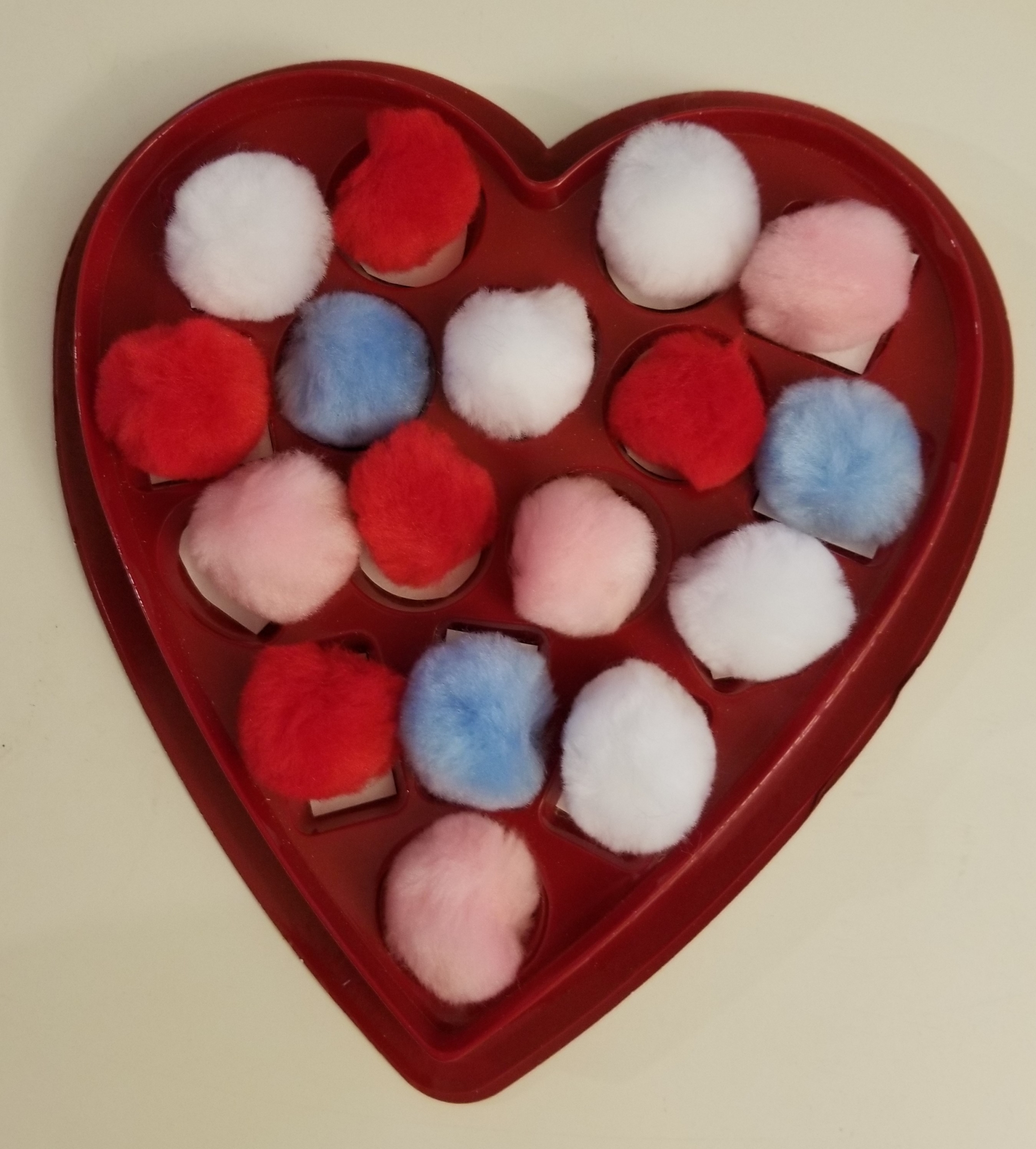
Step 6: Give your child the box and take turns lifting the pom-poms to look for letter matches! This game works just like a classic memory matching game: Each person lifts two pom-poms on their turn. If they get a match, they can leave the letters uncovered. If not, they put back the pom-poms to hide the letters again. When looking at the letters each time, use the moment to reinforce their names and sounds.
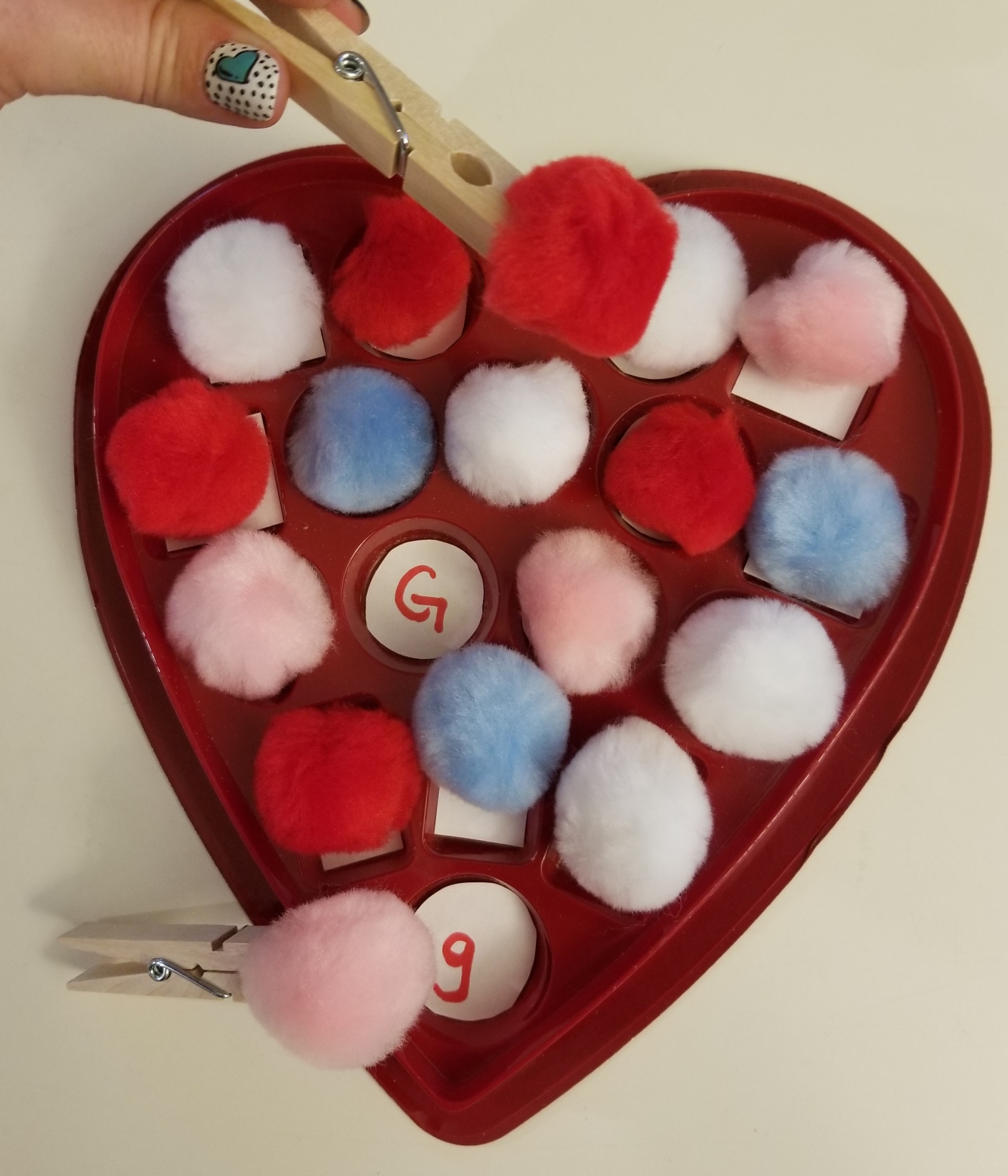
Optional: I use clothespins or tweezers as a way to pick up and put down the pom-poms. It’s a great way of developing fine motor skills and teaching proper pencil grip.
This activity is also easily adaptable. You can change the letters with each game, keeping it fresh and eventually using all 26 letters of the alphabet. You can adapt the game to teach counting, writing a number on one piece of paper and then drawing dots on its corresponding match. Or, for more advanced readers, pair rhyming words as matches.
There’s nothing as sweet as spending time with your child, so sneak in all the snuggles and playtime you can. Bonus: Enjoying a guilt-free chocolate treat in service of a good cause!
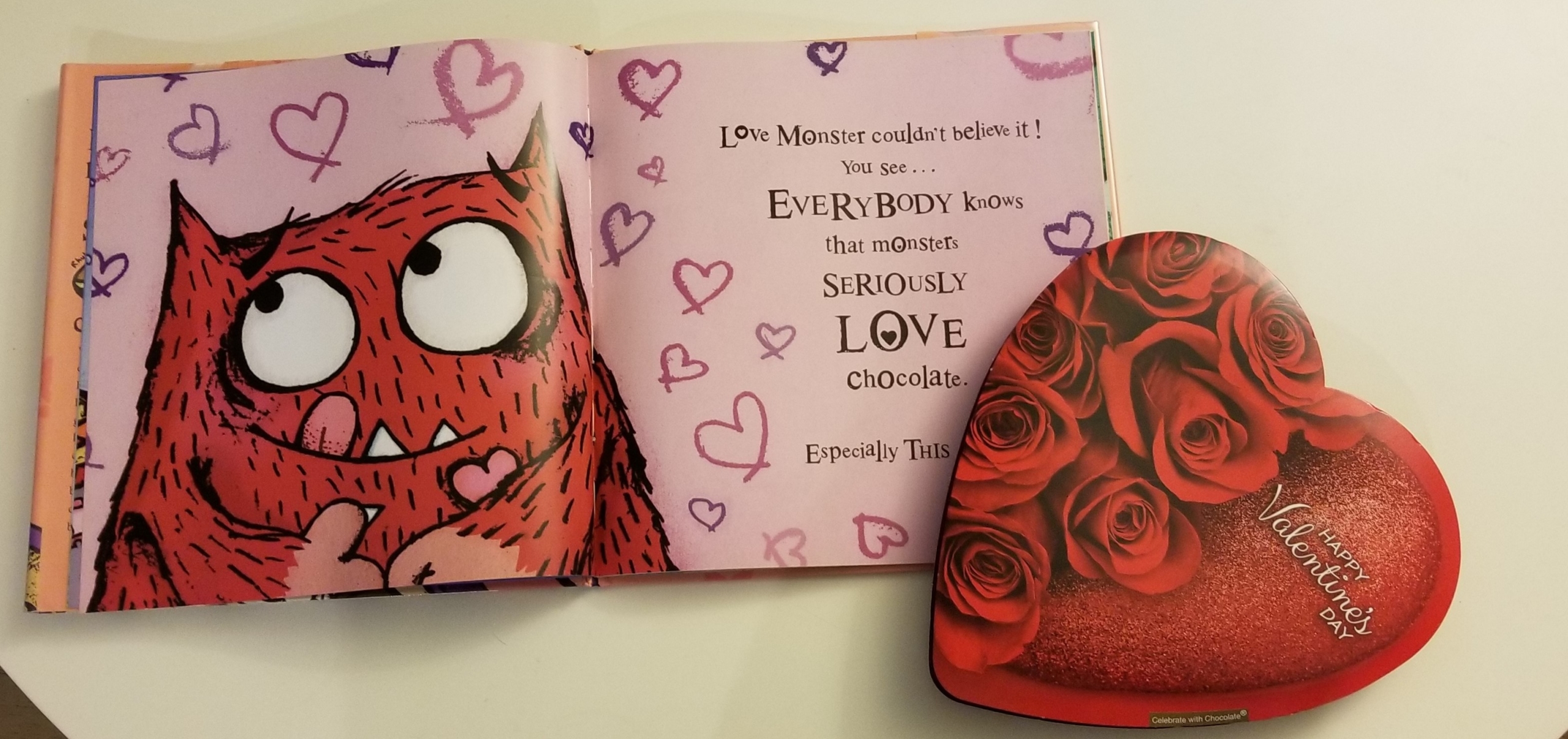
Pin Me for Reference :
